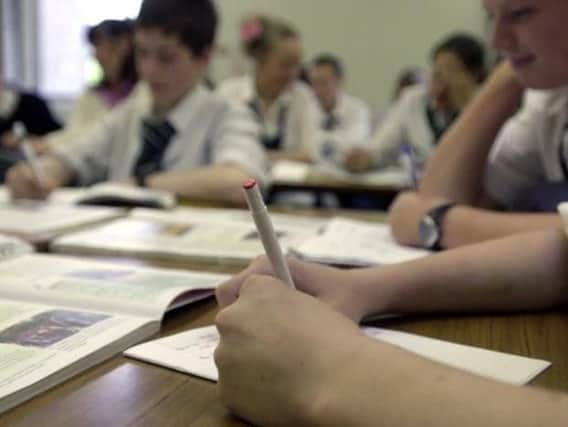Q&A: What are grammar schools and why have they been resurrected?


New grammar schools must take more pupils from poor families - Justine GreeningWhat are grammar schools?
A grammar is a secondary school that puts academic ability at the heart of its entrance policy, rather than factors such as catchment areas or faith.
Advertisement
Hide AdAdvertisement
Hide AdThis is measured through the 11-plus test, which involves verbal and non-verbal reasoning assessments, and places are allocated on the basis of results.
What is the difference between maintained schools, free schools, academies and grammars?
Unlike with grammar schools, free schools and academies exist outside a local authority's remit, allowing them direct access to Government funding and the ability to set their own syllabus.
Free schools are new schools set up from scratch by groups such as parents or charities, while academies are existing schools which have been taken over and transformed.
Advertisement
Hide AdAdvertisement
Hide AdMaintained schools make up the majority of state schools and operate under the supervision of councils, but do not have a selective approach to intake.
Why are some private schools called grammar schools?
Some former grammar schools converted to private schools, keeping the word in their title but charging parents fees.
Why were grammar schools banned?
The Labour government passed legislation in 1998 outlawing the creation of new grammars amid concerns that failure of the 11-plus exam affected children's life chances.
Critics said secondary-modern schools, where many children who failed their 11-plus ended up, were weak alternatives and were disproportionately populated by poorer children.
Aren't grammar schools still around?
Advertisement
Hide AdAdvertisement
Hide AdThere are around 167,000 pupils in 164 such schools in England, dotted all over the country but concentrated in places like Buckinghamshire and Kent.
In 2015, Kent County Council secured the right to build the first grammar school in 50 years following a protracted battle by parents in the district.
It was allowed on the basis that it was an extension of an existing school and there was sufficient demand.
Why has Theresa May resurrected the idea?
A grammar school student herself, the Prime Minister has argued that they can help raise standards and close the attainment gap between disadvantaged children and their peers.
Advertisement
Hide AdAdvertisement
Hide AdBy tweaking admissions procedures to prioritise students from poorer backgrounds and helping sustain standards in non-selective schools - so-called meritocracy measures - the Government says selective education will not be defined by class divisions.
How will this work?
Justine Greening has said the Government's working analysis has put the cap on priority access to schools at a household income of around £33,000.
This formula will take account of families who have to stretch household income over a larger number of children than others, she added.
Does the evidence suggest a gap between rhetoric and reality?
Advertisement
Hide AdAdvertisement
Hide AdThe Education Policy Institute last year said creating more grammar schools was likely to widen the gulf in attainment between rich and poor children, while the Royal Society found no evidence that disadvantaged children would be helped by a rise in selective school places.
But the Government has insisted these analyses were not based on their meritocracy-driven vision for grammars.
Meanwhile, a cross-party alliance of campaigners headed by former education secretary Nicky Morgan and former deputy prime minister Nick Clegg warned in March that the policy was ideology-driven and would not promote social mobility.
Head teachers heckled the Education Secretary over the proposals during a keynote speech in Birmingham last month.
Read more: